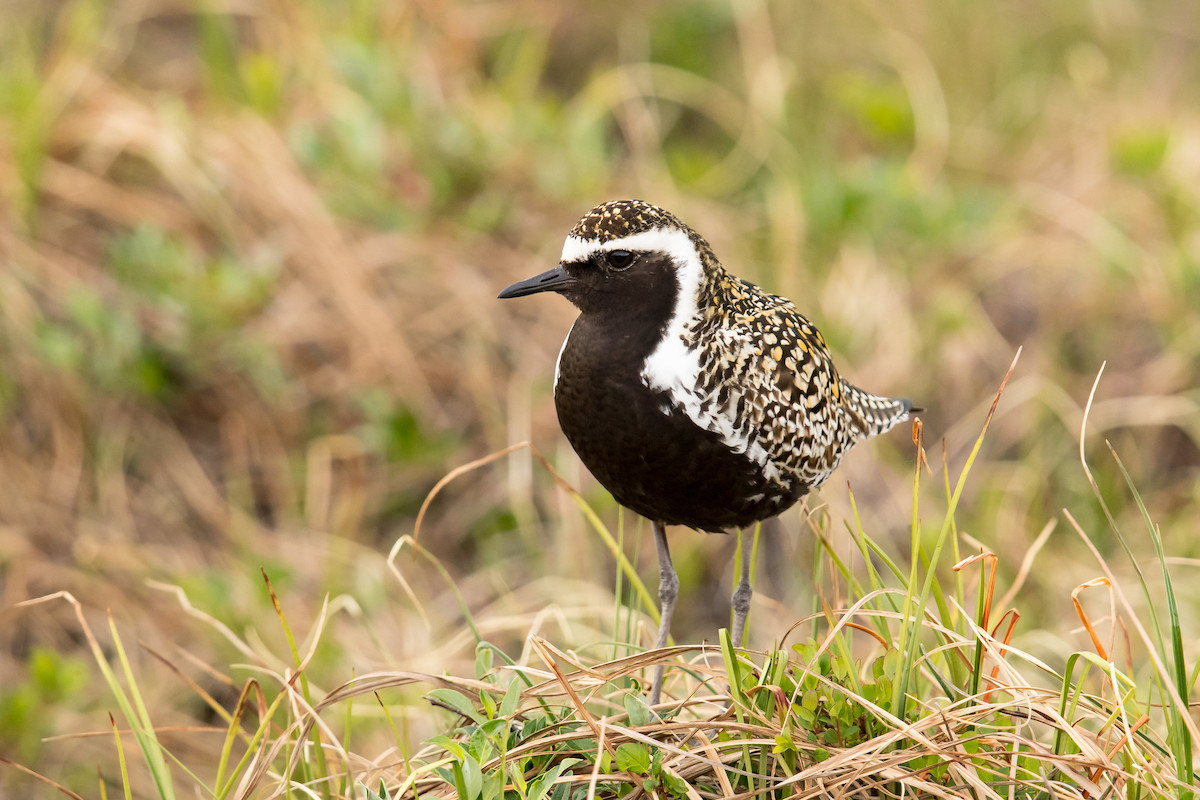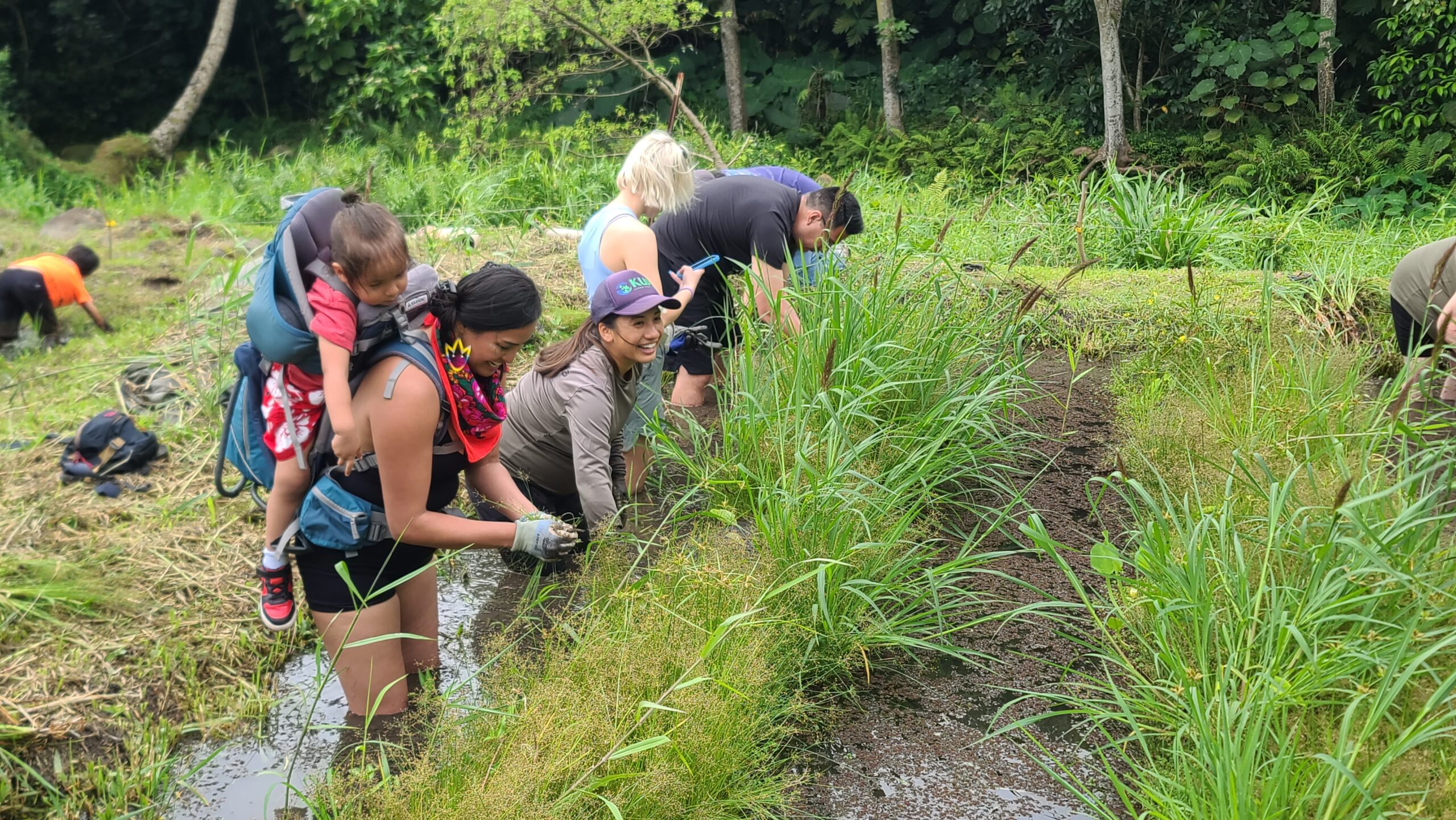This post was originally posted on the National Estuarine Research Reserve Association (NERRA) website, and featured in their June 2024 e-newsletter. You can find the original post here.

In April 2024, Reserve staff from Alaska, Washington, Oregon, and Hawaiʻi worked together with Pacific Birds Habitat Joint Venture to convene the largest gathering of Indigenous leaders and community partners in the history of the Reserve System.
Something happens when you step into the cool, dark mud of a loʻi kalo (wetland agroecosystem). You slow down. And if your task is to care for this habitat, you see the only way to do that is by working with others. For the members of 16 Tribal Nations, Reserve staff, and partners who traveled to Hawaiʻi’s Heʻeia Reserve last April, stepping into a loʻi kalo was the perfect way to begin a conversation with wide-ranging implications—how to indigenize conservation science.
With support from the NERRS Science Collaborative and Pacific Birds Habitat Joint Venture (Pacific Birds), 41 participants came from Alaska, Washington, and Oregon to explore the integration of western and Indigenous Knowledge systems in the conservation of migratory birds and the habitats they rely on for survival.

“Birds like the Pacific Golden-Plover connect many people,” says Monica Iglecia, the U.S. coordinator for Pacific Birds, “and the places birds rely on for survival across their migratory routes are the same places that nourish human communities and cultures.”
“Indigenous communities have long recognized that people, water, birds and plants are connected, that they cannot be separated as they are so often in conventional scientific practice,” says Kawika Winter, director of the He’eia Reserve. “There are some things that need to be unlearned and new things for all of us to learn. This workshop helped strengthen the partnerships between Reserves and their Indigenous partners that we need to be ready for that change.”
The workshop combined laulima (many hands working together) on service learning projects in a local loʻi kalo and loko iʻa (fishpond or aquaculture system), field trips, and discussions about biocultural restoration, Indigenous stewardship, data sovereignty, education, and outreach. Participants also had opportunities to share stories and cultural practices.
“To witness firsthand the dedication, resilience, and profound wisdom of those committed to the stewardship of these lands and the well-being of humanity left an indelible mark upon my spirit,” says YakaiYastai Gorman-Etl, behavioral health program coordinator at Northwest Indian College.
“It was a humbling privilege to reflect upon my own journey, my purpose, and the ways in which I navigate my role in serving my students and Indigenous communities. In the shared space of this workshop, beneath the vast canopy of stars and the embrace of ancestral spirits, I found kinship and resonance. We are bound not only by our dedication to land stewardship, but also by a shared commitment to nurturing meaningful relationships and fostering reciprocity with the earth and its inhabitants.”

The workshop engaged members of the Kānaka ʻŌiwi; Chugach Regional Resources Commission; Samish Indian Nation; Swinomish Indian Tribal Community; Coquille Indian Tribe; Confederated Tribes of the Coos, Lower Umpqua, and Siuslaw Indians; Northwest Indian College; and Fond du Lac Band of Lake Superior Chippewa (Ojibwe).
The workshop created space for participants to discuss the cascading benefits for communities and ecosystems when people are reconnected with their lands and culture and the benefits of intergenerational participation in conservation.
“There was deep appreciation for our intentional gathering of multiple generations of leaders, including young people and our kūpuna (elders),” says Winter. “Many noted that this intentional inclusion of older and future leaders at a professional gathering was new for them, but intentionally designing our meetings as intergenerational gatherings to facilitate knowledge transfer through the generations is one way that we can indigenize our work for a deeper and richer experience.”
Staff from the Kachemak Bay, Padilla Bay, South Slough, and Heʻeia Reserves and their partners at Pacific Birds are building on this experience to develop an inventory of site-based Indigenous and conventional knowledge sources and management/stewardship practices for coastal wetland habitats and birds.
“We’ve recognized that trust must be established before we can ask Indigenous partners to share their knowledge and practices, so we are working on that slowly and carefully,” says Laura Farwell, project manager and conservation coordinator for Pacific Birds. “This work will lay foundations and help catalyze the co-development of collaborative research projects that build from relationships and insights gained.”
The true value of gatherings like these, she observes, are building relationships and trust, which will have long-lasting impacts on conservation and communities. And as Winter notes, “this gathering was not ‘the thing,’ but rather it was the catalyst for ‘the thing’—stronger partnerships between Reserves and their Indigenous partners across the Pacific, which in turn will influence how the rest of the System functions in the future. In the end, every single person left with a renewed sense of hope for the future.”
